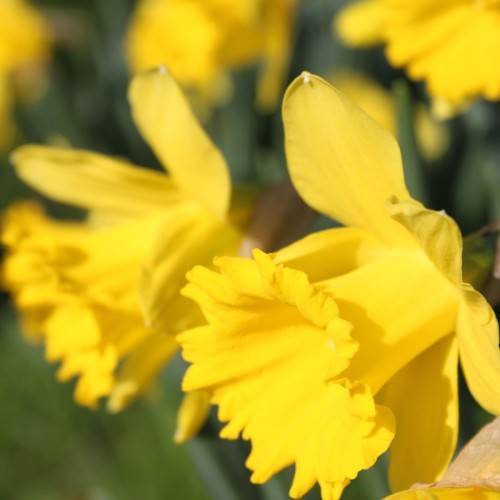
large-cupped daffodil
Narcissus 'Easter Morn'
Cycle:
Perennial
Watering:
Average
Hardiness Zone:
3 - 8
Flowers:
Flowers In Spring
Sun:
Full sun,part shade
Leaf:
Yes
Growth Rate:
High
Maintenance:
Low
Drought Tolerant:
Yes
Care Level:
Medium
watering
Large-cupped daffodils need to be watered deeply and evenly. Water them every 3 days during the summer, taking care to moisten the entire root zone by using a soaker hose or other slow-delivery method. Early in the spring, when the plants are just coming out of dormancy, let the soil surface almost dry out before watering. This encourages the roots to search for moisture. In late summer and fall, let the soil dry out completely between waterings. Monitor soil moisture closely, as daffodils can suffer from root rot if the soil remains soggy.
sunlight
Narcissus 'Easter Morn' (large-cupped daffodil) requires full or partial sun. For the best visual display, this plant species should be grown in a sunny spot with at least 6 hours of sunlight per day. Additionally, this plant species should be grown in a location providing a couple of hours of direct sunlight each day. This can be supplemented with additional light coming from nearby tree limbs or buildings if necessary. Generally, flowers of Narcissus 'Easter Morn' will bloom in springtime around Easter, although if the climate is warm, the flowering period may last a little bit longer.
pruning
Pruning of Large-cupped daffodil (Narcissus 'Easter Morn') should be done each year, typically before the leaves begin to die back. Pruning should consist of removing any dead or diseased foliage and deadheading flowers that have wilted and faded. This will benefit the overall look and health of the plant and help promote better blooms the following season. Pruning should be done gently and slowly, as to not damage the plant or its individual stems. Additionally, gently trimming off any foliage or flower stems that are crowding the base of the plant will ensure better growth in the future.
